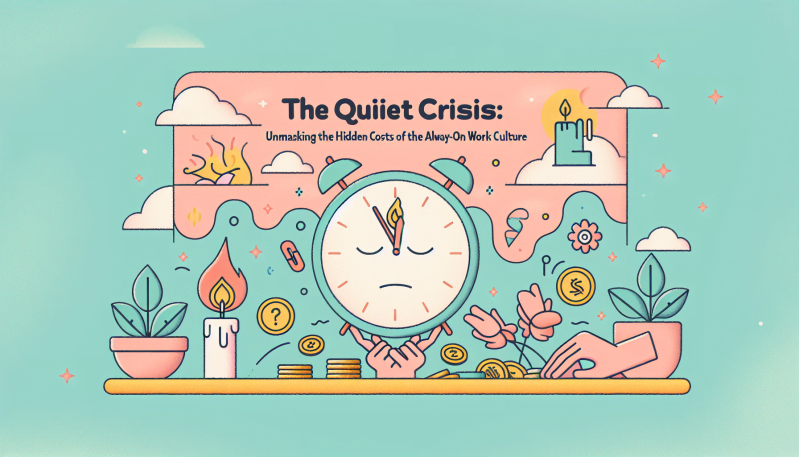In an unassuming office on the East Coast, Sarah checks her work email for the third time before her morning coffee has a chance to cool. Across the country, in a dimly lit bedroom in San Francisco, Michael stares at his glowing laptop screen, responding to after-hours requests from his boss. They are the embodiment of the modern-day workforce, and their stories are a microcosm of a pervasive issue that afflicts millions around the globe: the always-on work culture.
As the digital revolution streamlines communication, the line between work and personal life doesn’t just blur—it often disappears entirely. Smartphones buzz with work notifications during family dinners. Laptops invade bedrooms, and the home office becomes a siren’s call impossible to resist, even after the day’s official hours have ended. But at what cost comes this relentless connectivity?
The Quiet Crisis we face today is the grand illusion that being always-on equates to productivity and success. The reality, though, is far more complex. This blog offers a deep dive into the psychological toll and the insidious, often unrecognized costs of such a work culture. We talk to Dr. Emma Richardson, a clinical psychologist who has seen a steady rise in clients suffering from work-related anxiety and burnout. ‘The mind needs rest just as the body does,’ she says. ‘When we’re constantly wired to our jobs, the stress response doesn’t get a chance to dissipate, leading to chronic mental health issues.’
The glorification of hustle culture, with its ‘rise and grind’ mantra, entices many to wear overwork as a badge of honor. Yet, we find that the narrative is shifting, as more workers, like Sarah and Michael, are experiencing the burnout that comes from this unsustainable lifestyle. Their testimonies, among others, paint a vivid picture of the invisible battle being waged, as they struggle to maintain a semblance of work-life balance.
As we further explore the consequences of the always-on work culture, it’s crucial to highlight the role that corporate policies play in perpetuating or alleviating this crisis. Some companies have begun to implement ‘right to disconnect’ policies, while others champion flexible work schedules and mental health days. These initiatives offer a glimpse into the kind of systemic change needed to combat the mental health crisis brewing in our workforce.
But can these changes come fast enough, and are they widespread enough to shift the tide? This article not only explores the existing problem but also serves as a clarion call for broader societal change. It is an appeal to re-evaluate our relationship with work, to question the status quo, and to demand a cultural shift towards sustainable work practices—for the sake of our collective mental health and well-being.
This piece serves as a reflection, an investigation, and, most importantly, a conversation starter. For readers accustomed to the in-depth analysis provided by The Washington Post, The New Yorker, and The New York Times, ‘The Quiet Crisis’ is more than just another article. It’s a necessary critique of an always-on work culture that affects us all, and a step towards understanding that while our work is important, it shouldn’t come at the expense of our health.




